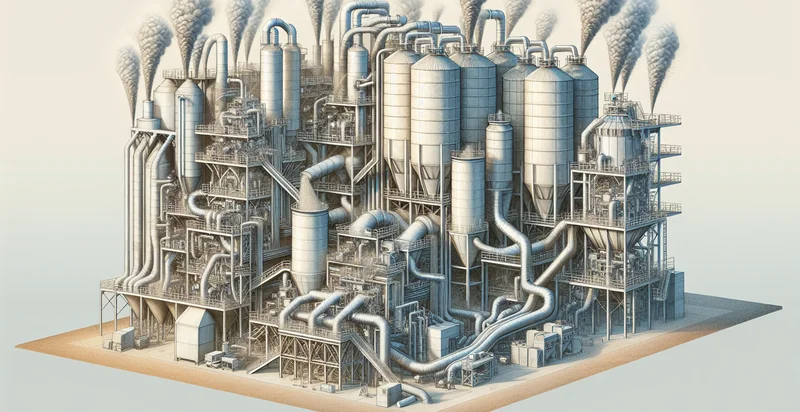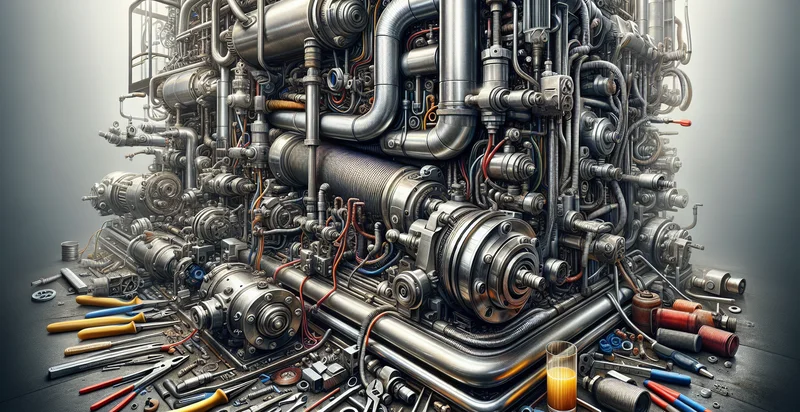Identify dust collection system conditions
using AI
Below is a free classifier to identify dust collection system conditions. Just upload your image, and our AI will predict the collection conditions of your dust collection system - in just seconds.

Contact us for API access
Or, use Nyckel to build highly-accurate custom classifiers in just minutes. No PhD required.
Get started
import nyckel
credentials = nyckel.Credentials("YOUR_CLIENT_ID", "YOUR_CLIENT_SECRET")
nyckel.invoke("dust-collection-system-conditions", "your_image_url", credentials)
fetch('https://www.nyckel.com/v1/functions/dust-collection-system-conditions/invoke', {
method: 'POST',
headers: {
'Authorization': 'Bearer ' + 'YOUR_BEARER_TOKEN',
'Content-Type': 'application/json',
},
body: JSON.stringify(
{"data": "your_image_url"}
)
})
.then(response => response.json())
.then(data => console.log(data));
curl -X POST \
-H "Content-Type: application/json" \
-H "Authorization: Bearer YOUR_BEARER_TOKEN" \
-d '{"data": "your_image_url"}' \
https://www.nyckel.com/v1/functions/dust-collection-system-conditions/invoke
How this classifier works
To start, upload your image. Our AI tool will then predict the collection conditions of your dust collection system.
This pretrained image model uses a Nyckel-created dataset and has 5 labels, including Excellent Condition, Fair Condition, Good Condition, Poor Condition and Very Poor Condition.
We'll also show a confidence score (the higher the number, the more confident the AI model is around the collection conditions of your dust collection system).
Whether you're just curious or building dust collection system conditions detection into your application, we hope our classifier proves helpful.
Related Classifiers
Need to identify dust collection system conditions at scale?
Get API or Zapier access to this classifier for free. It's perfect for:
- Equipment Maintenance Alerts: The false image classification function can identify specific conditions of dust collection systems that indicate potential equipment failures. By monitoring and analyzing image data, the system can send alerts for maintenance when signs of excessive dust buildup or malfunctioning components are detected, thereby preventing costly downtimes.
- Operational Efficiency Monitoring: This function enables businesses to assess the operational effectiveness of their dust collection systems in real-time. Anomalies or inefficiencies can be detected promptly through false classification, allowing for quick interventions that optimize performance and reduce energy consumption.
- Compliance Verification: Manufacturing industries often face strict regulations regarding air quality and particulate emissions. The false image classification function can assist compliance officers in verifying that dust collection systems are operating within permissible limits by analyzing images and ensuring all components are functioning correctly.
- Training and Education: The false image classification can serve as a training tool for new employees in understanding dust collection systems. By using real-world images, employees can learn to recognize potential issues and the importance of regular monitoring to maintain system integrity and workplace safety.
- Predictive Analytics Integration: The function can be integrated into predictive analytics systems to enhance forecasting accuracy for dust collection system failures. This proactive approach helps businesses plan maintenance schedules based on predicted conditions, minimizing unexpected interruptions and maintenance costs.
- Quality Control Improvements: In manufacturing settings, the function aids in maintaining product quality by ensuring dust is effectively collected during production. By identifying when the dust collection system underperforms, manufacturers can address issues before they impact the quality of their products.
- Customer Satisfaction Enhancement: Enhanced dust collection system performance leads to a cleaner working environment, directly influencing employee health and satisfaction. By implementing the false image classification function, businesses can ensure a safe workspace, boosting morale and helping attract and retain top talent.


